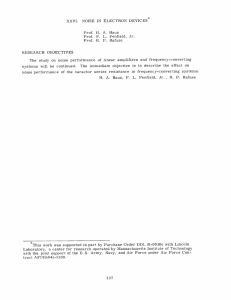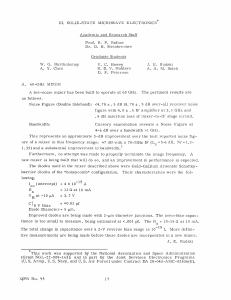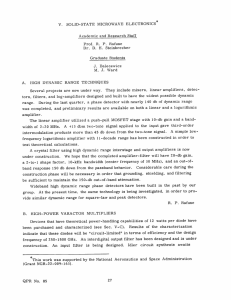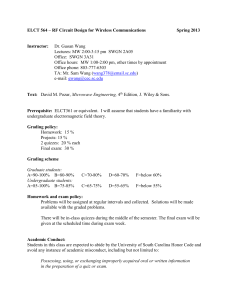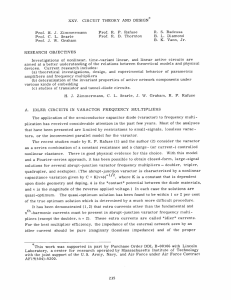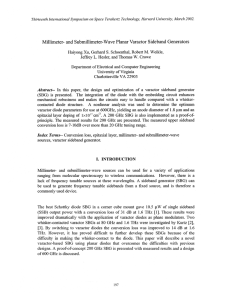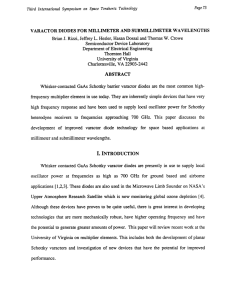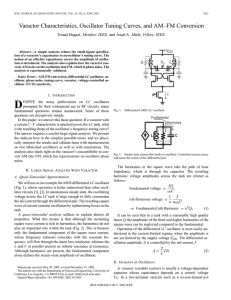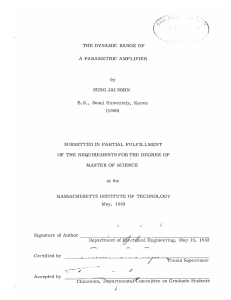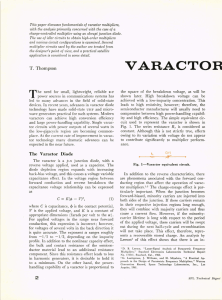III. SOLID-STATE MICROWAVE ELECTRONICS Rafuse
advertisement
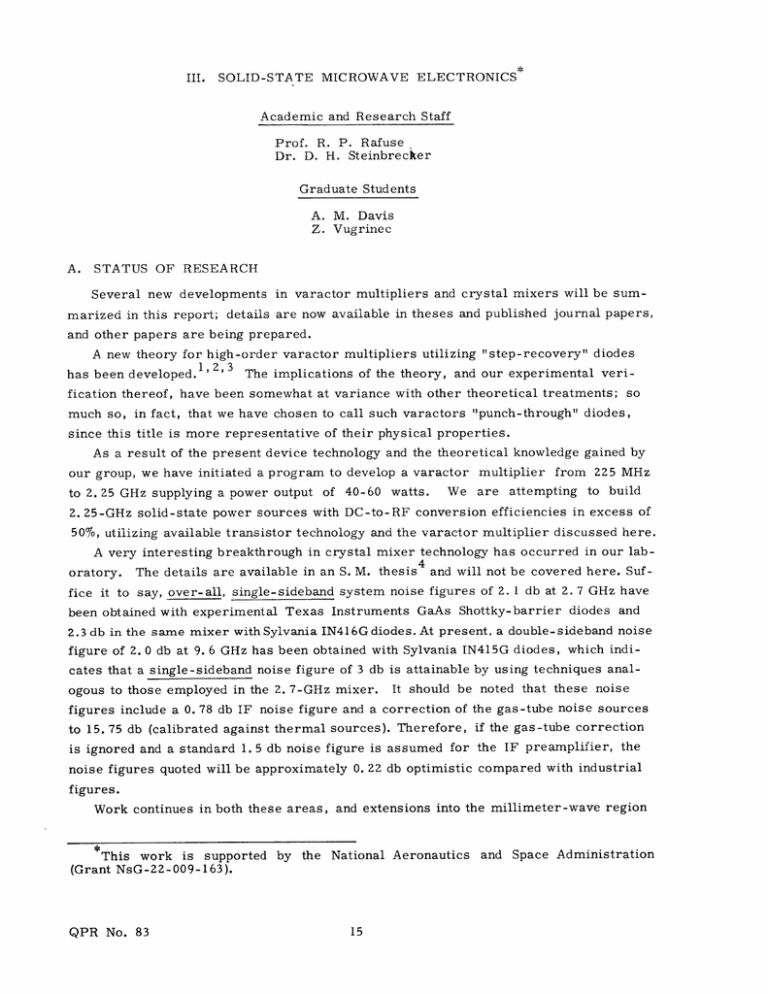
III. SOLID-STATE MICROWAVE ELECTRONICS Academic and Research Staff Prof. R. P. Rafuse Dr. D. H. Steinbrecker Graduate Students A. M. Davis Z. Vugrinec A. STATUS OF RESEARCH Several new developments in varactor multipliers and crystal mixers will be sum- marized in this report; details are now available in theses and published journal papers, and other papers are being prepared. A new theory for high-order varactor multipliers utilizing "step-recovery" diodes has been developed.1, 2, 3 The implications of the theory, and our experimental veri- fication thereof, have been somewhat at variance with other theoretical treatments; so much so, in fact, that we have chosen to call such varactors "punch-through" diodes, since this title is more representative of their physical properties. As a result of the present device technology and the theoretical knowledge gained by our group, we have initiated a program to develop a varactor to 2. 25 GHz supplying a power output of 40-60 watts. We multiplier from 225 MHz are attempting to build 2. 25-GHz solid-state power sources with DC-to-RF conversion efficiencies in excess of 50%, utilizing available transistor technology and the varactor multiplier discussed here. A very interesting breakthrough in crystal mixer technology has occurred in our laboratory. The details are available in an S. M. thesis4 and will not be covered here. Suf- fice it to say, over-all, single-sideband system noise figures of 2. I db at 2. 7 GHz have been obtained with experimental Texas Instruments GaAs Shottky-barrier diodes and 2.3 db in the same mixer with Sylvania IN416Gdiodes. At present, a double-sideband noise figure of 2. 0 db at 9. 6 GHz has been obtained with Sylvania IN415G diodes, which indicates that a single-sideband noise figure of 3 db is attainable by using techniques analogous to those employed in the 2. 7-GHz mixer. figures include a 0. 78 db IF It should be noted that these noise noise figure and a correction of the gas-tube noise sources to 15. 75 db (calibrated against thermal sources). Therefore, if the gas-tube correction is ignored and a standard 1. 5 db noise figure is assumed for the IF preamplifier, the noise figures quoted will be approximately 0. 22 db optimistic compared with industrial figures. Work continues in both these areas, and extensions into the millimeter-wave region This work is supported (Grant NsG-22-009-163). QPR No. 83 by the National Aeronautics and Space Administration (III. SOLID-STATE MICROWAVE ELECTRONICS) are planned. We also plan to begin to make our own Shottky-barrier diodes for the higher frequency mixers (above 30 GHz). An examination of phase-lock properties of avalanchediode oscillators at 15 GHz continues and will consider injection locking of pulsed modes of operation. R. P. Rafuse, D. H. Steinbrecker References 1. R. P. Rafuse, "Recent Developments in Parametric Multipliers," Proc. National Electronics Conference, October 1963, pp. 461-470. 2. R. P. Rafuse and D. H. Steinbrecker, "Harmonic Multiplication with Punch-Through Varactors," International Solid-State Circuits Conference, Digest of Technical Papers, Vol. IX, pp. 68-69, February 1966. 3. D. H. Steinbrecker, "Limitations on Parametric Amplifiers and Improved Efficiency Varactor Multipliers," Ph. D. Thesis, M. I.T. , July 15, 1966. 4. J. Vugrinec, "The Effect of Image-Frequency Termination in Microwave Mixers Using Shottky-Barrier Diodes," S. M. Thesis, M. I. T. , September 2, 1966. QPR No. 83 of the
